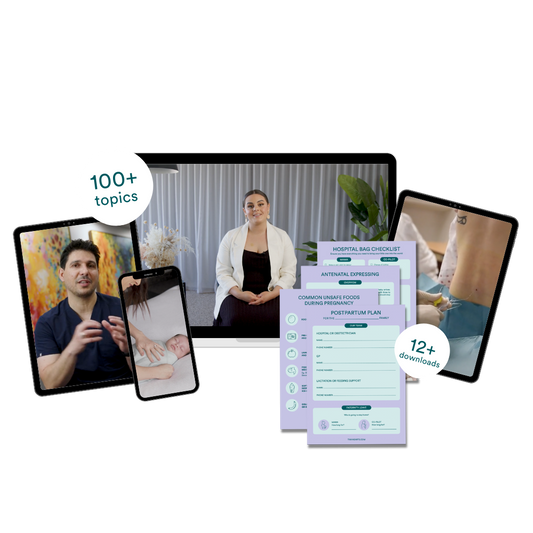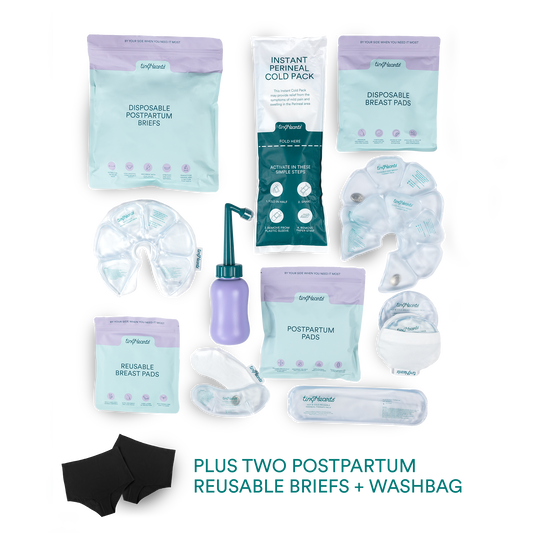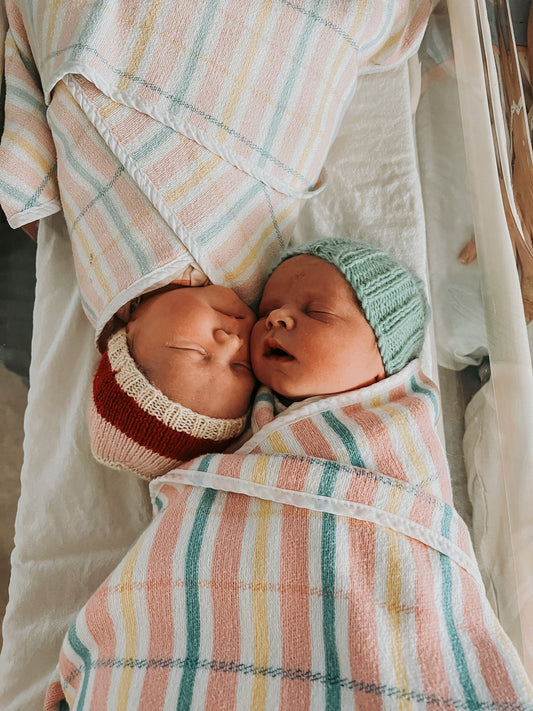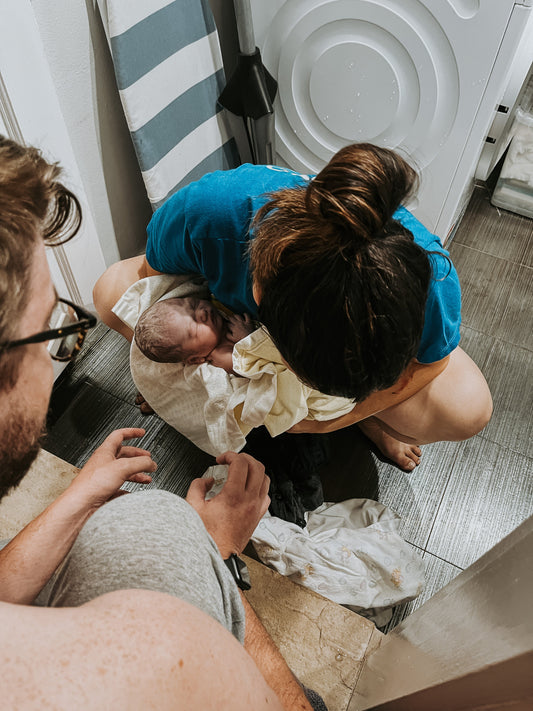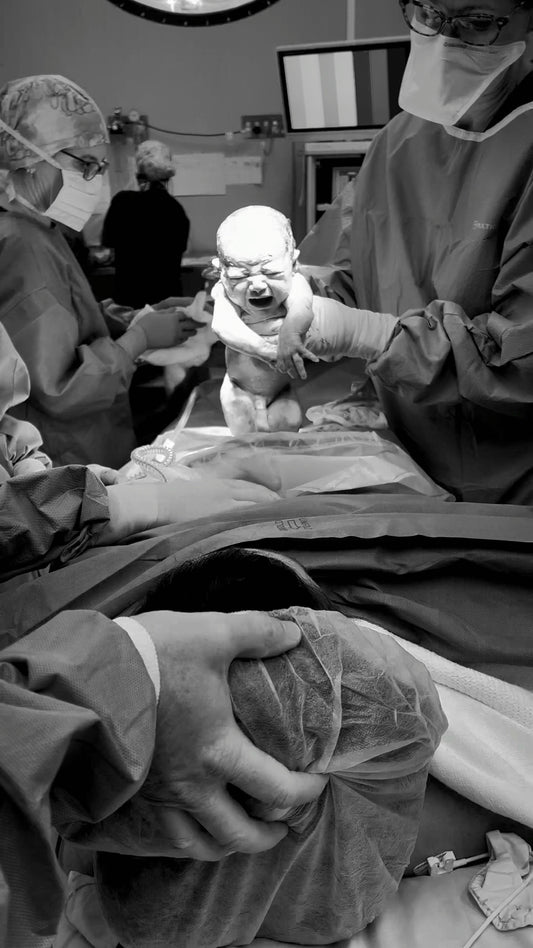Those three letters you've probably heard over and over again this winter: R. S. V.
RSV is one of the most common winter illnesses, especially in our little ones. Although you may have seen or heard some devastating RSV stories where children needed hospital admission or urgent care for this virus, it's important to remember that, for the most part, it is a mild illness that will come and go without becoming serious.
So if your little one has RSV and the symptoms are safe to be managed at home, use this blog to guide you through how to best care for your little one at home with RSV.
Managing your child's symptoms

Some common symptoms of RSV are runny nose, cough, wheezing and fever. These are the symptoms you'll be managing when looking after your child at home.
If your child has a cough, don't reach for the cough medicine. Cough medicine is not recommended for children under 6 as it isn't effective for treating coughs in children and can be harmful to younger children. Instead, use my honey hack to help with managing coughs. Honey can reduce the severity and duration of a cough. Giving 1-2 teaspoons before bed can help reduce nighttime coughs, hopefully producing better quality sleep for your little one. Honey should not be given to little ones under 12 months due to the risk of botulism.
Runny noses are another common symptom you might find yourself dealing with when your little one has RSV. This one can be especially tricky for little ones who don't quite understand how to blow their noses yet. One of the ways you can teach your little one to blow with their nose is to draw a stick figure onto the tissue, then demonstrate covering your mouth and blowing with your nose to make the tissue "dance" around. Then ask your child to try and copy you to make the stick figure dance too. You can also try using saline to help loosen the mucous. Just pop 1-2 drops of saline in each nostril. The saline will help to loosen the mucous. Saline sprays can be purchased from the chemist, or you can make your own.
Some parents may also use a nasal aspirator/suction device to help clear the mucous. Remember that suctioning doesn't stop the runny nose but provides temporary relief. Make sure to follow the manufacturer's instructions on how to safely use these devices. You can also use steam to help loosen the mucous. Do this by running a warm bath/shower and closing the door to keep the steam in the room. Lifting your Bub to be more upright may also help with blocked noses.
Keep your child hydrated
![]()
When children are sick, they may not feel like eating as much, and that's okay. Keeping up their fluids is more important than keeping up their food intake at this time. Encourage small fluids regularly. You can make it more "fun" for them by popping a rubber band onto their bottle and challenging them to try and get the water below the level of the rubber band. Little ones are at risk of dehydration when sick, so keep track of how much they drink. Another important thing to keep track of is their output: How many wet nappies are they making? What colour are they? How heavy are they? And is your little one losing extra fluids through vomiting or diarrhoea? An easy system to keep track of all of this is using a dehydration tracker.
Keeping your child comfortable
 We know how miserable being sick can feel, and little ones are no different. They might be more cranky and irritable, and you might wonder how much longer this will go on. I know exactly how that feels, and I always remind myself that this too, shall pass. Here are some things you can do to help keep your child as comfortable as possible during their sickness.
We know how miserable being sick can feel, and little ones are no different. They might be more cranky and irritable, and you might wonder how much longer this will go on. I know exactly how that feels, and I always remind myself that this too, shall pass. Here are some things you can do to help keep your child as comfortable as possible during their sickness.
Warm water. This is something I swear by. Get you and Bub undressed and hop into a shower or bath with warm water. Warm water works miracles. I find that little ones relax and calm down much better when in warm water. Not to mention that the steam from the water can help loosen Bub's mucous (double win!) Remember that COLD baths and showers aren't recommended when your child has a fever. It can be distressing for your child and can cause shivering and raise their body temperature more. Make sure the water is nice and warm instead!
Pain relief medications
If your child is feeling miserable, you may want to give them some pain relief. Paracetamol and ibuprofen are two common pain relief medications for children. If using medications, remember to keep track of dosing and times to avoid a potential medication overdose. There are a lot of things running through your brain when your child is sick, so don't rely on your brain to remember the last dosage time. Use a medication tracker that can be stuck up somewhere visible so other carers can also see when the last dose was given.
Monitor for respiratory distress

One of, if not the most important part of caring for your child with RSV at home is being able to tell when your child needs to be in the hospital. Your little one might have been seen by a doctor who has given you the okay to go home, but don't forget that things can change. If your child gets sicker and their condition worsens, you need to be able to recognise that they have changed since they were last seen. And if they are showing signs of respiratory distress, they need to be taken back into the hospital to be reassessed. My tip for helping you identify changes in your child's condition is to take a video of their breathing when they are well so you can compare that video with how they breathe at any time. A skill all parents need to have is knowing how to complete a respiratory assessment. Learn how to do a respiratory assessment on your child in our first aid course.
More RSV resources for you:
Learn how to perform a respiratory assessment on your child in our course.

